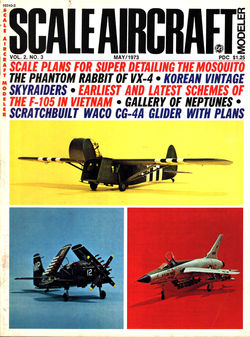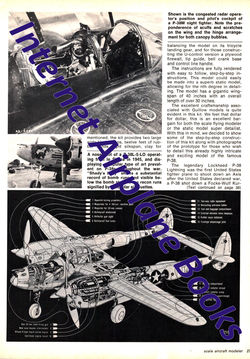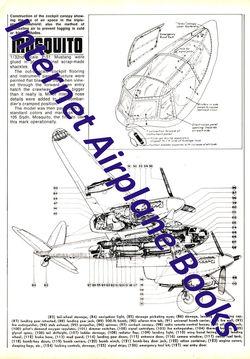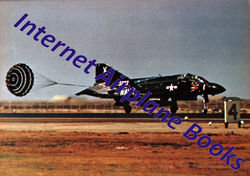SCALE AIRCRAFT MODELER MAY 73 F-4 VX-4 USN_WW2 WACO CG-4A_KOREAN WAR SKYRAIDERS_P2V_F-105
VIETNAM
WW2 RAF de
HAVILLAND MOSQUITO
McD F-4 PHANTOM PLAYBOY
BUNNY VX-4 USN
KOREAN WAR VINTAGE
DOUGLAS AD SKYRAIDERS (AD-4, AD-4Q ECM, AD-4N NIGHT ATTACK, AD-4W EARLY
WARNING, AD-5N, AD-5 DAY ATTACK, AD-5W)
REPUBLIC F-105
THUNDERBOLT THUD VIETNAM WAR USAF
LOCKHEED P2V
NEPTUNE USN PATROL BOMBERS VP MPA (ALSO RCAF, DUTCH NAVY KON.MARINE
WW2 WACO CG-4A
GLIDER US ARMY AIRBORNE GLIDER INFANTRY - The Waco CG-4A was the most widely
used American troop/cargo military glider of World War II. It was designated
the CG-4A by the United States Army Air Forces,[1] and named Hadrian (after the
Roman emperor) in British military service. Designed by the Waco Aircraft
Company, flight testing began in May 1942, and eventually more than 13,900
CG-4As were delivered.
WW2 GERMAN LUFTWAFFE
TANK Ta152H-1 HIGH ALTITUDE FIGHTER JG - The
Focke-Wulf Ta 152 was a World War II German high-altitude fighter-interceptor
designed by Kurt Tank and produced by Focke-Wulf. The Ta 152H H�henj�ger ("high-altitude
fighter") entered service with the Luftwaffe in January 1945. The Ta 152
was produced too late and in insufficient numbers to affect the outcome of the
war. To reach higher altitudes, a
pressurized cockpit was added to the H models. The canopy was sealed via a
circular tube filled with rubber foam which was inflated by a compressed air
bottle, while the engine compartment was also sealed from the cockpit with a
rubber foam ring. A Knorr 300/10 air compressor provided the pressure,
maintaining the cockpit at 0.36 atmospheres (5.29 psi) above 8,000 m (26,250
ft). To prevent fogging, the windscreen was of a double-glazed style with a 6
mm (.236 in) thick outer pane and a 3 mm (.118 in) inner pane with a 6 mm (.236
in) gap. The gap was fitted with several silica gel capsules to absorb any
moisture forming between the panes. The Ta 152H-1 was among the fastest
piston-engined fighters of the war, with a top speed comparable to the
twin-engined Dornier Do 335. It was capable of 755 kilometres per hour (469
mph) at 13,500 metres (44,300 ft) using the GM-1 nitrous oxide boost and 560
kilometres per hour (350 mph) at sea level using the MW 50 methanol-water
boost.[7] It used the MW 50 system mainly for altitudes up to about 10,000
metres (33,000 ft) and the GM-1 system for higher altitudes, although both
systems could be engaged at the same time. Kurt Tank was flying an unarmed Ta
152H in late 1944 to a meeting at the Focke-Wulf plant in Cottbus when ground
controllers warned him of two P-51 Mustangs. The enemy aircraft appeared behind
Tank, but he escaped by applying full power and engaging the MW 50 boost
"until they were no more than two dots on the horizon".
FLYING BALSA WW2 LOCKHEED P-38 LIGHTNING FG
USAAF








